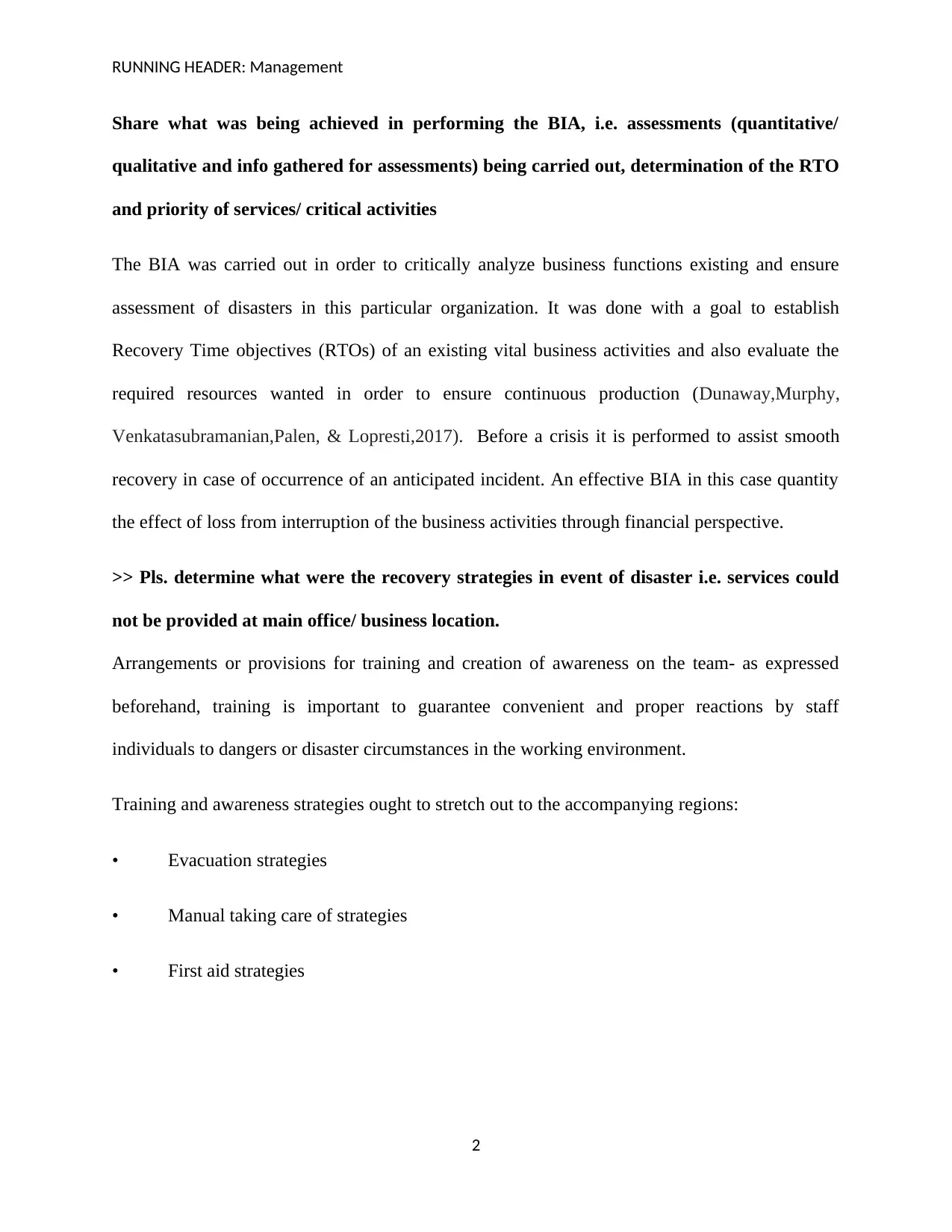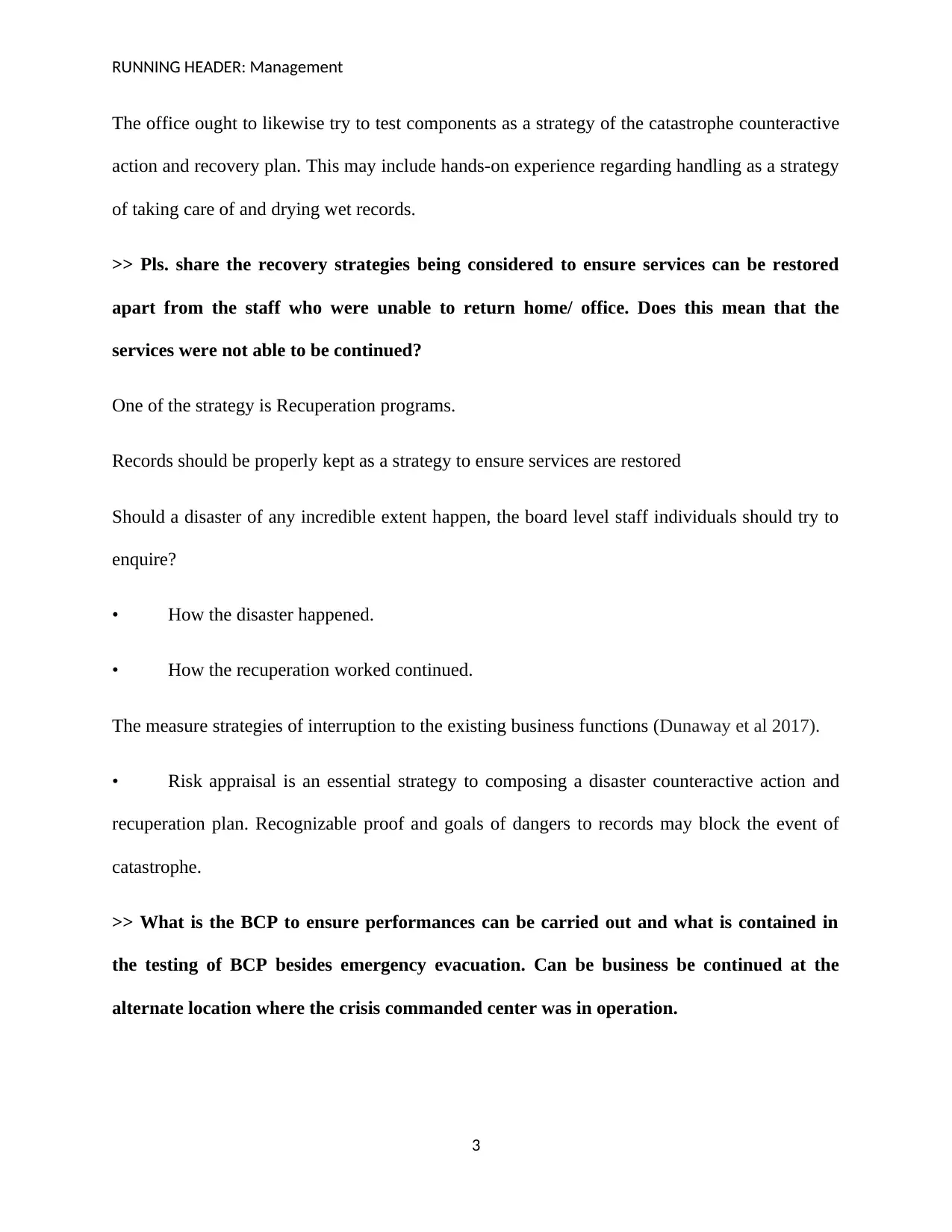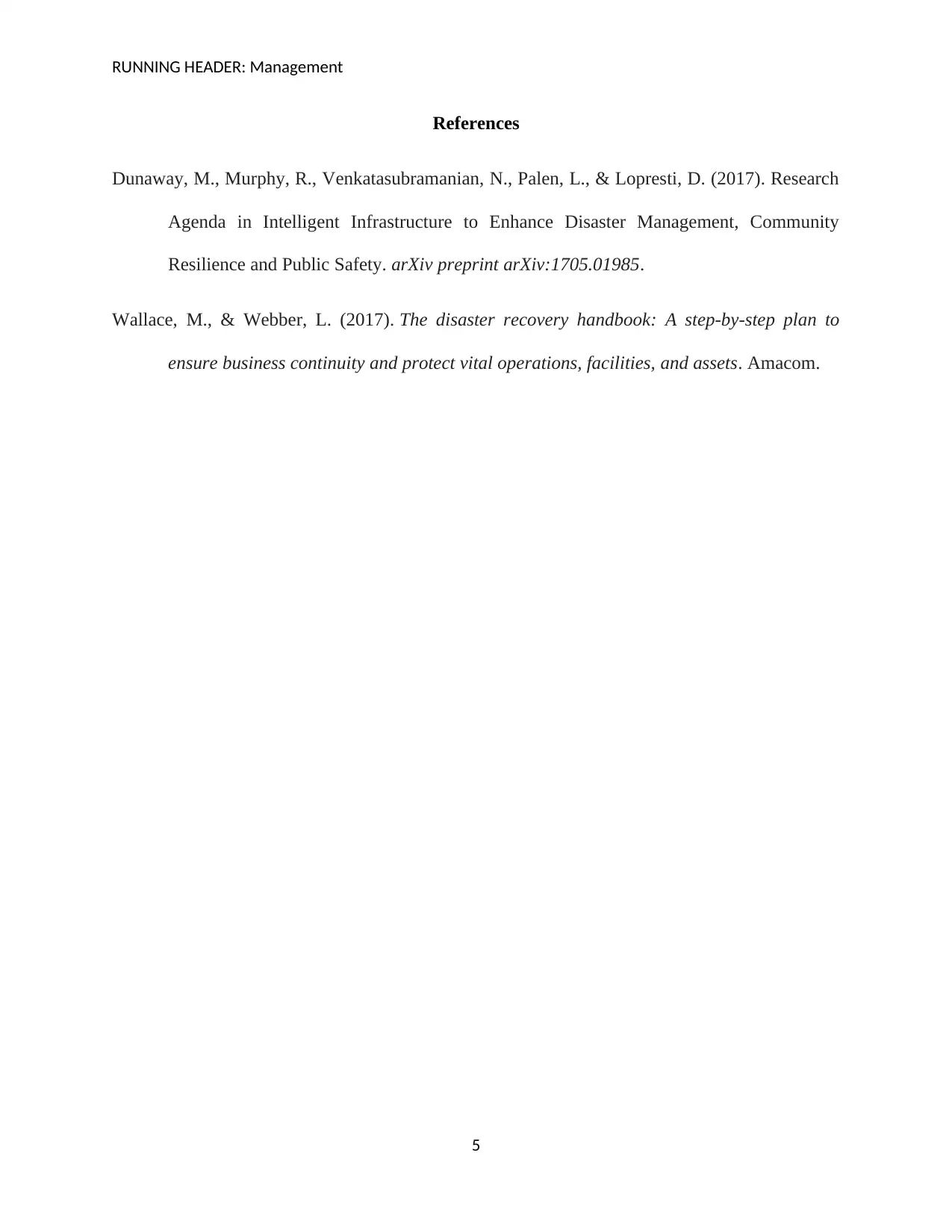Business Continuity: BIA, BCP, Disaster Recovery Strategies Report
VerifiedAdded on 2023/04/22
|5
|825
|457
Report
AI Summary
This report delves into the critical components of business continuity, focusing on Business Impact Analysis (BIA), Business Continuity Planning (BCP), and disaster recovery strategies. The BIA process is examined, highlighting the assessment of business functions, determination of Recovery Time Objectives (RTOs), and the evaluation of resource needs for continuous operations. The report explores various recovery strategies, including programs for data restoration and measures to ensure service continuity when the main office is inaccessible. It emphasizes the importance of training and awareness programs for staff, encompassing evacuation, first aid, and manual handling strategies. Furthermore, the report discusses the development and testing of the BCP, including emergency communication protocols, crisis management plans, and the mobilization of services to alternate locations. The analysis includes a review of testing methodologies, such as issues audits and vulnerability assessments, to ensure preparedness and effective response in crisis situations. The report concludes by underscoring the significance of risk assessment in developing a robust disaster prevention and recovery plan.
1 out of 5








![[object Object]](/_next/static/media/star-bottom.7253800d.svg)